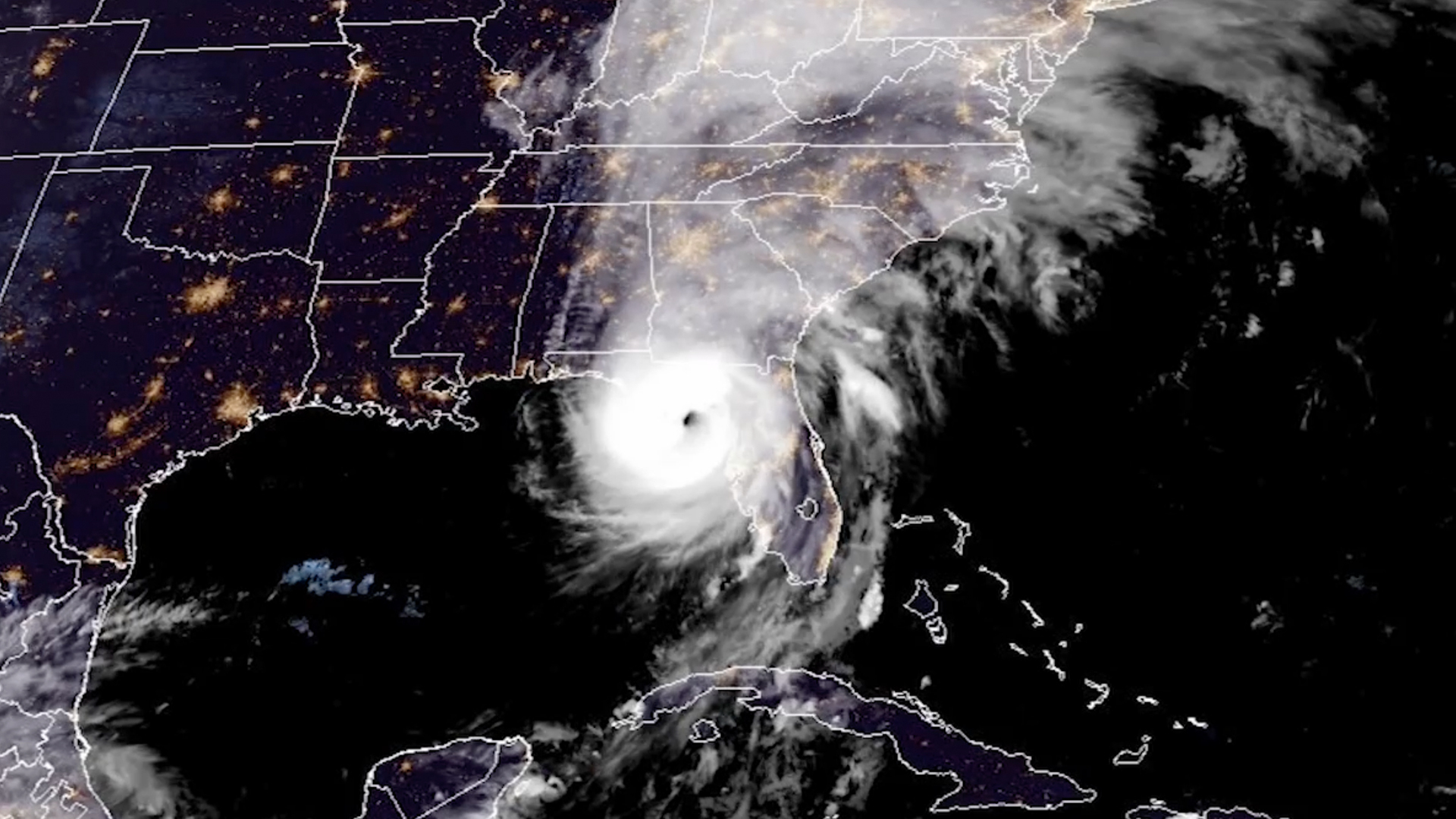4 years after the giant Arecibo Observatory collapsed, we finally know what happened
A Zinc decay was to blame for cable failures at the Arecibo Observatory, which held the title of "world's largest radio telescope."

What does the discovery of a binary pulsar in 1974, the discovery of the first exoplanets, and the most powerful message humans have ever sent out into space all have in common? They all happened at the Arecibo Observatory in Puerto Rico.
With a spherical reflector dish that was 305 meters (roughly 1000 feet) in diameter, Arecibo held the title of world's largest radio telescope for over half a century — from its construction in 1963 until 2016. To the dismay of astronomers around the world, in 2020, Arecibo's reflector dish collapsed when support cables gave way, leading to the eventual decommissioning of one of science's most fruitful instruments.
Not long after the decommissioning, the National Science Foundation and the University of Central Florida began an investigation into the primary causes of the collapse — and after nearly four years of investigation, the Committee tasked with finding an explanation have finally released an official report detailing its findings.
In the report, the Committee writes:
"After analyzing the data and the extensive and detailed forensic investigations commissioned by the University of Central Florida and the National Science Foundation (NSF), the committee consensus is that the root cause of the Arecibo Telescope's collapse was unprecedented and accelerated long-term zinc creep induced failure of the telescope's cable spelter sockets."
The reports details how structural failure of the telescope likely began in 2017 when Hurricane Maria hit the Observatory which "subjected the Arecibo Telescope to winds between 105 and 118 mph … the winds of Hurricane Maria subjected the Arecibo Telescope's cables to the highest structural stress they had ever endured since it opened in 1963."
According to the report, inspections were conducted after the hurricane, but no significant damage was deemed to have jeopardized the telescope's structural integrity. Still, repairs were still ordered — yet these repairs were delayed for years. And, as the investigation states, they were targeted "toward components and replacement of a main cable that ultimately never failed," which suggests the repairs would not have prevented the eventual collapse of the Observatory's reflector dish even if they weren't delayed.
Get the Space.com Newsletter
Breaking space news, the latest updates on rocket launches, skywatching events and more!
Eventually, in August and September of 2020, an auxiliary and main cable failed, leading the NSF to announce the decommissioning of the telescope through a controlled demolition. More support cables gave way on Dec. 1, 2020, causing the instrument platform to collapse into the dish itself. Thankfully, no one was injured by the cable failures.
The report continued to detail how hidden outer wire failures triggered the collapse, which had fractured due to shear stress from zinc creep (or zinc decay) in the telescope's cable spelter sockets. Unfortunately, this issue was not identified during the post-Maria inspection, which meant engineers hadn't considered the degradation of these mechanisms as a source of a potential future collapse.
Despite Arecibo's discovery days being over, the observatory will be remade into a education center known as Arecibo C3. Hopefully, the decommissioned observatory can inspire the next generation of astronomers to make discoveries as impactful as those made at Arecibo during its days peering out into the universe.
Join our Space Forums to keep talking space on the latest missions, night sky and more! And if you have a news tip, correction or comment, let us know at: community@space.com.

Conor Feehly is a New Zealand-based science writer. He has earned a master's in science communication from the University of Otago, Dunedin. His writing has appeared in Cosmos Magazine, Discover Magazine and ScienceAlert. His writing largely covers topics relating to neuroscience and psychology, although he also enjoys writing about a number of scientific subjects ranging from astrophysics to archaeology.
-
newworldsexplr I heard that besides the Arecibo being a world class radio telescope for decades and in most of my lifelong interest in space as I was born in 1960 and have been interested in astronomy space exploration since I learned how to read at 4 or 5 years old that Arecibo also had very good relations with the people of Puerto Rico. I heard this included a place that was especially an inspiration and a chance to get experience in astronomy and physics for native Puerto Rican university or grad students. What is being done by the government or Puerto Rico and the United States to make some new or upgraded especially astronomy or physics research facility in Puerto Rico to also encourage more young people there to enter into and continue in work in science and technology especially the physical sciences?Reply -
George² Reply
Nothing concrete yet. But it is possible that the new government will set a real new target. However, the implementation of such will require continuity, since it is hardly possible to implement it only within one mandate.newworldsexplr said:What is being done by the government or Puerto Rico and the United States to make some new or upgraded especially astronomy or physics research facility in Puerto Rico to also encourage more young people there to enter into and continue in work in science and technology especially the physical sciences? -
fj.torres Reply
More precisely, lack of maintenance funding from NSF.Viking said:Main cause of failure appears to be stupidity.
They were more interested in starring in pressers of "new!" projects than supporting a valuable facility. Before the hurricane they were looking for ways to offload the telescope to the local government or an NGO or if not shut it down.
It was going to be shut down sooner rather than later.
The bureaucrats were happy when it fell because it "freed up budget" to spend on their preferred projects. None of which even begins to address the science the observatory carried out.
Not to be forgotten: the Arecibo radar was the first line of defense against incoming asteroids. -
Mustellus Incoming asteroids? Sadly, one problem radars have is that they can 'see' the ionization trails left by meteorites as they burn up in earth's atmosphere. To avoid this clutter, most ignore anything coming at us at above escape velocity.Reply
This means the entire Aurcturian Empire invasion fleet can approach, and we won't notice till it goes into a closed orbit. -
Pogo Typical of our infrastructure maintenance, build it, don’t maintain it enough, then scratch our heads when it falls. Like many bridges and buildings.Reply
Just a shame it won’t be rebuilt, it was awesome. -
TomMariner NSF and the University in Florida stole the maintenance money for their pet projects.Reply
As others have pointed out -- not just the largest radio telescope that passively receives signals from "out there" -- it is by far the world's most powerful radar, able to bounce massive radio waves off passive stuff hurtling toward wiping out cities on Earth.
Maybe we should have said that Arecibo could create "Artificial Intelligence" so some post-Doc professor could have written a paper that got a grant. Even better, if Puerto Rico were a State, they could have called on their Senator to grab the money.
I manned a USAF radar station just up the coast from Arecibo at Punta Salinas so I have a grasp on both the geography and the technology. -
billslugg The Arecibo dish was built by a general contractor Amos Carlton Samford Jr. His son, Bill (RIP), was my age and lived about a mile from me here in town up until he got run over by a car 1-2-2015. In his house, Bill had some black and white construction photos of the dish and a plaque with his Dad's name on it.Reply -
fj.torres Reply
Incoming asteroids, yes. Long before they hit atmosphere or even lunar orbit.Mustellus said:Incoming asteroids? Sadly, one problem radars have is that they can 'see' the ionization trails left by meteorites as they burn up in earth's atmosphere. To avoid this clutter, most ignore anything coming at us at above escape velocity.
This means the entire Aurcturian Empire invasion fleet can approach, and we won't notice till it goes into a closed orbit.
You do know the Arecibo radar mapped the surface of venus?
And detected all sorts of NEOs before they got close. That is how it mapped their surfaces and orbits. It wasn't the only radar that could do it (even Goldstone can) but it was the most powerful.
Here:
https://orbitshub.com/beyond-the-hype-the-future-of-neo-tracking-and-exploration/
There is still a NEO tracking program but it lost a lot of capability with Arecibo.
The arcturians won't get all that close without cloaking tech.
